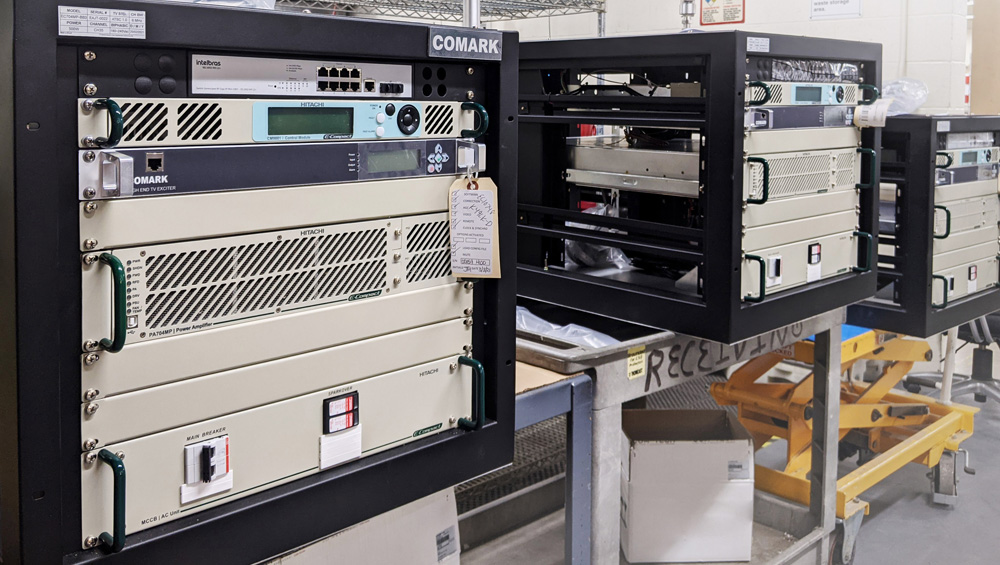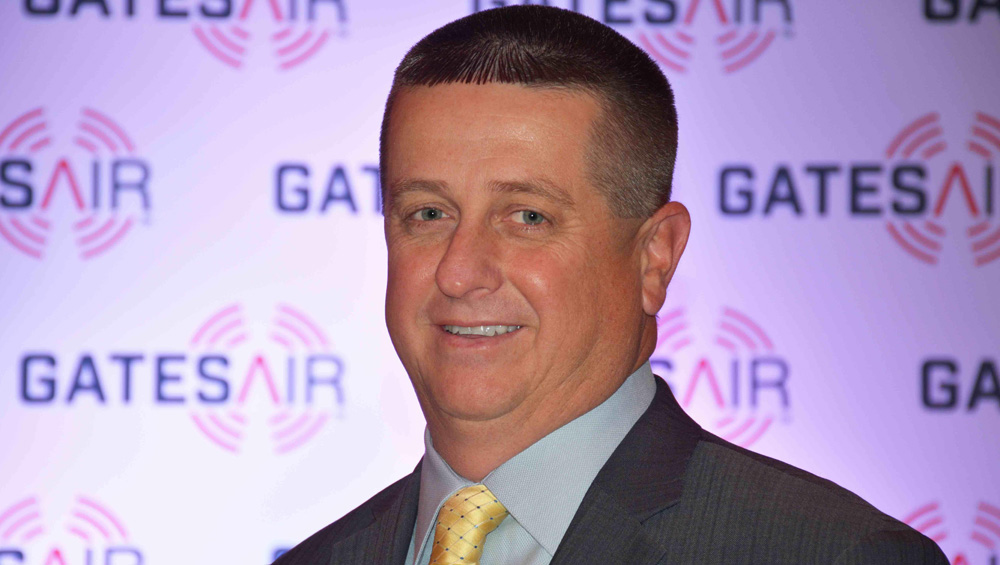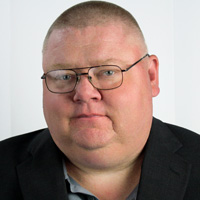
TVN Tech | A Busy Spring For LPTV’s Repack

Vendors of transmission equipment to low-power TV stations report robust business as their customers contend with two major regulatory initiatives from the FCC — the ongoing move to new channels for LPTVs and translators displaced by the full-power RF repack that concluded last year, and the July 13, 2021, deadline for analog LPTV stations to convert to digital operations.
Meanwhile, there is also increased interest in using LPTV sticks to transmit in the new ATSC 3.0 digital TV standard.
“We started getting business early last year and it’s continued through now,” says David Neff, GM of leading LPTV transmitter vendor Anywave Communication Technologies. Neff adds that business has been fairly steady, without any of the big spikes he had expected.
LPTVs originate their own programming and broadcast at an effective radiated power (ERP) of 15 kilowatts or less, while translators retransmit the signals of full-power stations in order to extend their coverage across rural areas, operating within the same 15 kW threshold. Neither were allowed to participate in the FCC’s incentive auction of 600 MHz spectrum, and neither received new channel assignments after the subsequent “repack” of the UHF TV spectrum under which 987 full-power stations moved to new channels by July 3, 2020. But well over 2,000 LPTVs and translators lost their original channels as part of the repack process.
While some of those stations simply went dark, most filed displacement applications with the FCC back in 2017 for proposed new channels, and more than 2,000 have been granted construction permits (CPs). According to the FCC, some 947 LPTVs and transmitters applied in 2019 for reimbursement for relocation costs from the $150 million earmarked by Congress in 2018 for such purpose, and 873 have been deemed eligible.
Other LPTV entities, including large translator networks in Utah and Arizona, received financial assistance from wireless carrier T-Mobile, which claimed the lion’s share of the 600 MHz spectrum at auction and started moving to clear it back in 2018.
For example, most of the translators in northern Arizona moved to new channels by early 2019 after months of consultation with T-Mobile and frequency-juggling between public and commercial broadcasters, says Karl Voss, chief engineer for public broadcaster KAET Phoenix. The LPTVs avoided “mutually exclusive” applications — where two or more stations apply for the same channel — by working with one RF consultant, Meintel, Sgrignoli & Wallace LLC, to develop the channel plan for everyone to move to (MSW was initially hired by PBS to manage the LPTV repack for all of its member stations).
“We were before Phase One [of the full-power repack], as T-Mobile was pushing a whole lot to get this market changed out,” Voss says. “It was quite a learning experience between us and T-Mobile getting the process kicked off. I don’t think anyone thought about how to do the planning for this.”
Challenges To Finding New Homes
Beyond Arizona, “almost all” of MSW’s LPTV repack clients managed to find new homes, says managing partner Dennis Wallace. But it wasn’t easy.
“For the guys in the spectrum-congested areas, the East and West Coast, the bigger markets, it was very difficult,” Wallace says. “We ended up with a lot of stations moving to undesirable channels, like low-band [VHF] channel 2, just because there was nothing else available in a lot of those locations. The translator guys, which typically are in the mountainous West, that’s a little bit easier situation because you don’t have as much spectrum congestion, so it was easier to find channels for those. The complicated ones are basically Boston to Washington, and East Coast in the top 20 markets. It’s just really hard to find a channel for folks post-incentive auction.”
Full-power giant Nexstar has around 50 LPTV assets and perhaps 100 translators, says CTO Brett Jenkins. Between 25 and 30 were displaced due to the RF repack, including a couple LPTVs that were “very important” to the station group as they carried a Fox affiliation. Others were less critical, as they were translators that were repeating a signal to a small population.
“For the most part, we were able to find homes,” Jenkins says. “There were probably one or two that to be quite frank we weren’t super happy about, where we ended up that we had to do something flaky with the coverage I didn’t like.”
Neff estimates that one-half to two-thirds of the LPTVs that had their channel applications approved by the FCC have already completed their work and made the switch. But he says there is still a lot of work to do (LPTVs have 36 months to build from the time they are issued their CP).
Analog Sunset Looms
Meanwhile, a more pressing issue is the July 13 deadline for LPTV stations that are still broadcasting in analog to turn off those NTSC signals and begin ATSC 1.0 operations. The same deadline also applies to new digital LPTV licensees that never launched because their CPs were frozen for several years because of the full-power repack.
Initial LPTV business was slow after the LPTV repack process was announced, with customers pushing out their orders, says Mark Goins, VP of North American sales for GatesAir. But business has picked up in the last six to eight months with the analog sunset looming.

GatesAir’s Mark Goins
“It’s everybody, the bigger owners as well as the smaller guys and independents,” Goins says. “The guys that have translators out there, they have to go digital, too. There are quite a few of those as well. What I can tell you is the closer we get to July 13, the calls start coming in.”
Antenna and transmission line vendor Dielectric has also seen a bump in business from the digital deadline, says Cory Edwards, sales manager for Dielectric. Dielectric does “a pretty good chunk” of LPTV business, says Edwards, working with LP-focused groups like ARK Multicasting and HC2 as well as Gray Television and Sinclair (which owns Dielectric). The company averages about five LP antennas per month, a number which held steady even through the full-power repack. But Dielectric is now building around 60 LPTV antennas and 50 RF filters between early May and the end of June.

Dieletric’s Cory Edwards
“Right now, what we’re seeing the most business from is non-repack-related construction,” Edwards says. “Some are just trying to save their CP, and there are quite a few players filing for extensions.” [The FCC can grant an extension of up to six months, but the LPTVs still need to cease analog operations on July 13].
Interest In ATSC 3.0
These LPTV stations are launching digital operations in ATSC 1.0, not 3.0. But Edwards sees some broader interest in 3.0 across the LPTV industry and says some of the bigger groups are looking ahead and paying extra to add vertical polarization to their antennas to improve reception by small antennas in mobile devices.
One of the LP players that is very focused on the 3.0 opportunity is ARK Multicasting, which just struck a deal with transmitter vendor Hitachi Kokusai Electric Comark LLC (Comark) to purchase 56 E-Compact transmitters and associated field services for LPTVs affected by the repack. Comark will be supplying a mix of EC700MP and EC700HP transmitter systems ranging in output power levels from 250W through 3.3kW for ARK stations’ new channel assignments. The transmitters include Comark’s EXACT-V2 IP Optimized DTV exciter with DualCast technology, which is easily upgradeable from ATSC 1.0 to 3.0.
ARK has 300 LPTVs and one Class A station reaching 100 million people, which mostly air religious programming. But the company’s plan is to switch those LPTVs to 3.0 operation in the next 18 to 36 months, says CEO Joshua Weiss, and continue to carry the same religious programming on a small splice of spectrum while devoting the rest to datacasting services.
First, ARK needs to complete its work from the LPTV repack, which impacted around 70 stations overall.
“We find ourselves battling between ATSC 1.0 regulatory complications and the ATSC 3.0 business plan we’re moving toward,” Weiss says.
Joe Turbolski, Comark VP of sales and marketing, says many LPTV players are interested in 3.0, but simply don’t have the financial resources to pursue it. The FCC reimbursement pays for matching current 1.0 operations, not for the additional equipment necessary for 3.0. So that’s what most cash-strapped LPTVs are buying, in contrast to some repacked high-power stations who made additional investments in higher-powered transmitters and elliptically polarized antennas.
“Everybody in the broadcast market recognizes the opportunity with ATSC 3.0, it’s just that not everybody is fully funded with the capital required to launch it,” Turbolski says.
Some big players, however, are looking at low-power TV and Class A stations as a way to launch 3.0 services in a market with little financial or operational risk to their existing 1.0 full-power stations. For example, in Grand Rapids, Mich., Nexstar took two Class A stations and MyNetworkTV affiliates, WXSP-CD and WOLP-CD, and converted them to 3.0 “lighthouse” stations that carry MNT and Nexstar’s ABC and NBC affiliates (WOTV and WOOD) in the market, as well as Scripps’ Fox station (WWMT) and Sinclair’s CBS affiliate (WXMI).
The two Class As operate as a “multi-frequency network,” carrying the exact same slate of programming on two separate frequencies. In theory, a consumer 3.0 receiver will default to whichever signal is strongest. Jenkins says the Class A stations, which will also serve as part of the BitPath datacasting network, will allow Nexstar to experiment a bit.
“The coverage is offset, but there is definitely a subset of the market where there are overlapping signals,” he says. “We’re interested to see what does that mean to the receiver, and are there ways to leverage that to potentially improve reception characteristics? At the same time, it has allowed us to transition very nicely with very little risk to our 1.0 distribution. If we learn some interesting things, who knows, maybe we start and go looking for these low-power setups.”
As for traditional small LPTV stations potentially dropping their current 1.0 operations — and audiences — and “flash-cutting” to 3.0, that will take some time, says KUED Salt Lake City Director of Engineering Phil Titus, who helps oversee Utah’s translator network.
“We would be facing as much as we spent on the last repack, probably that and much more, to try to convert the translators,” Titus says. “The other, probably more defining problem would be the public’s acceptance of 3.0 and the ability for them to transition instantly from 1.0 to 3.0. That’s going to be a ways off. Sets will have to be saturated in markets that allow both 1.0 and 3.0 reception before that could happen. Sets might be available now, but I don’t see it happening in five years.”
































Comments (0)